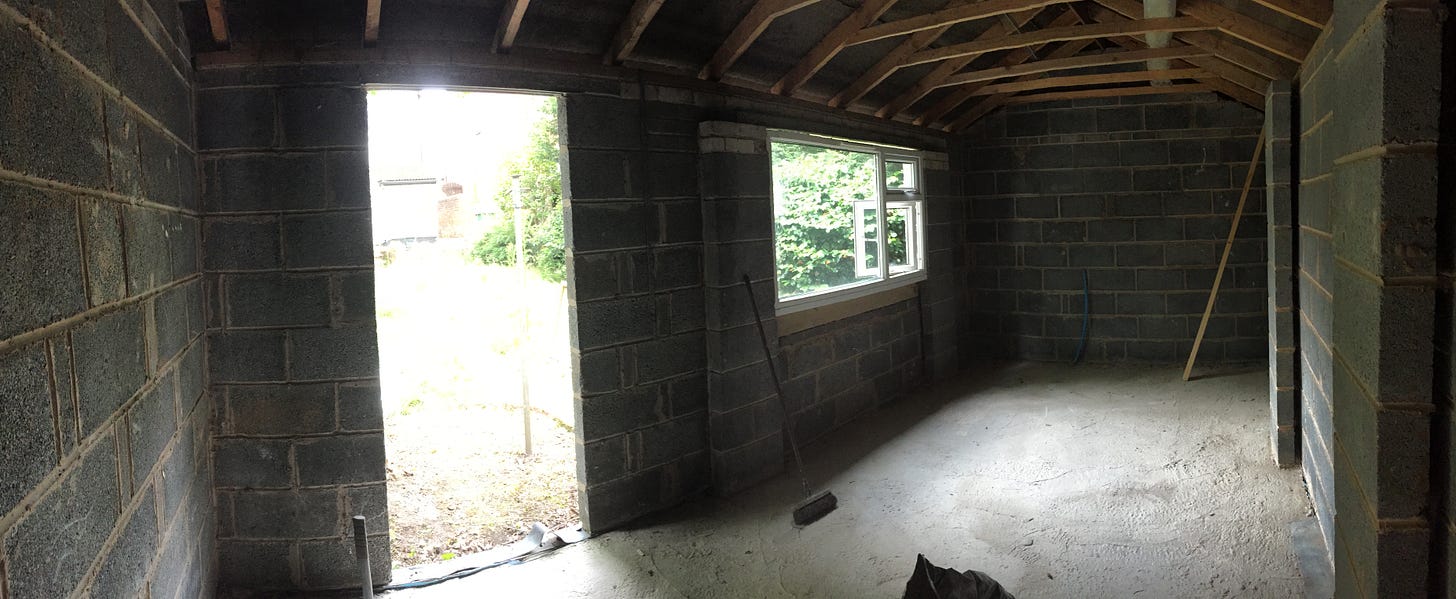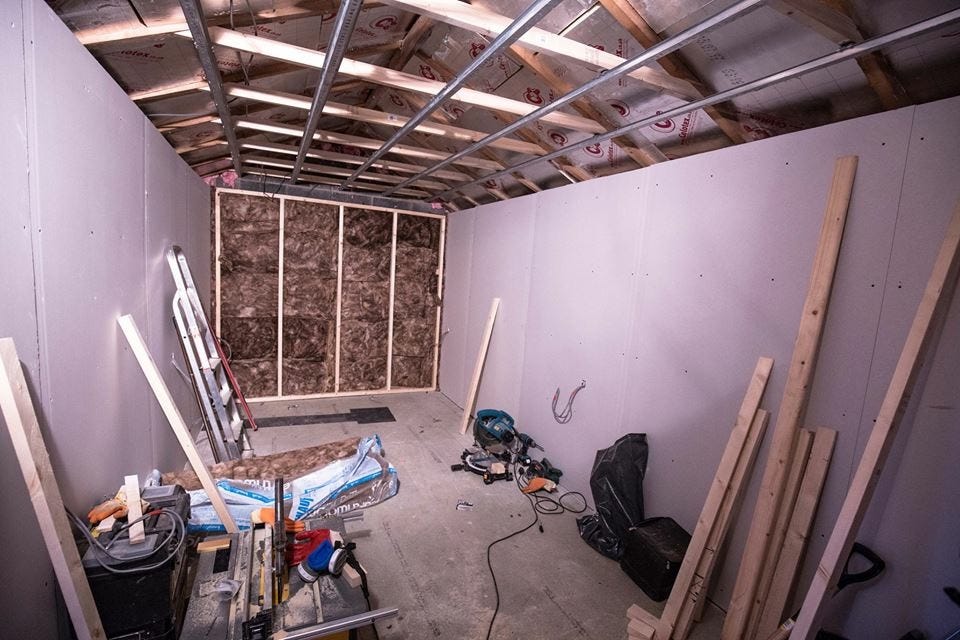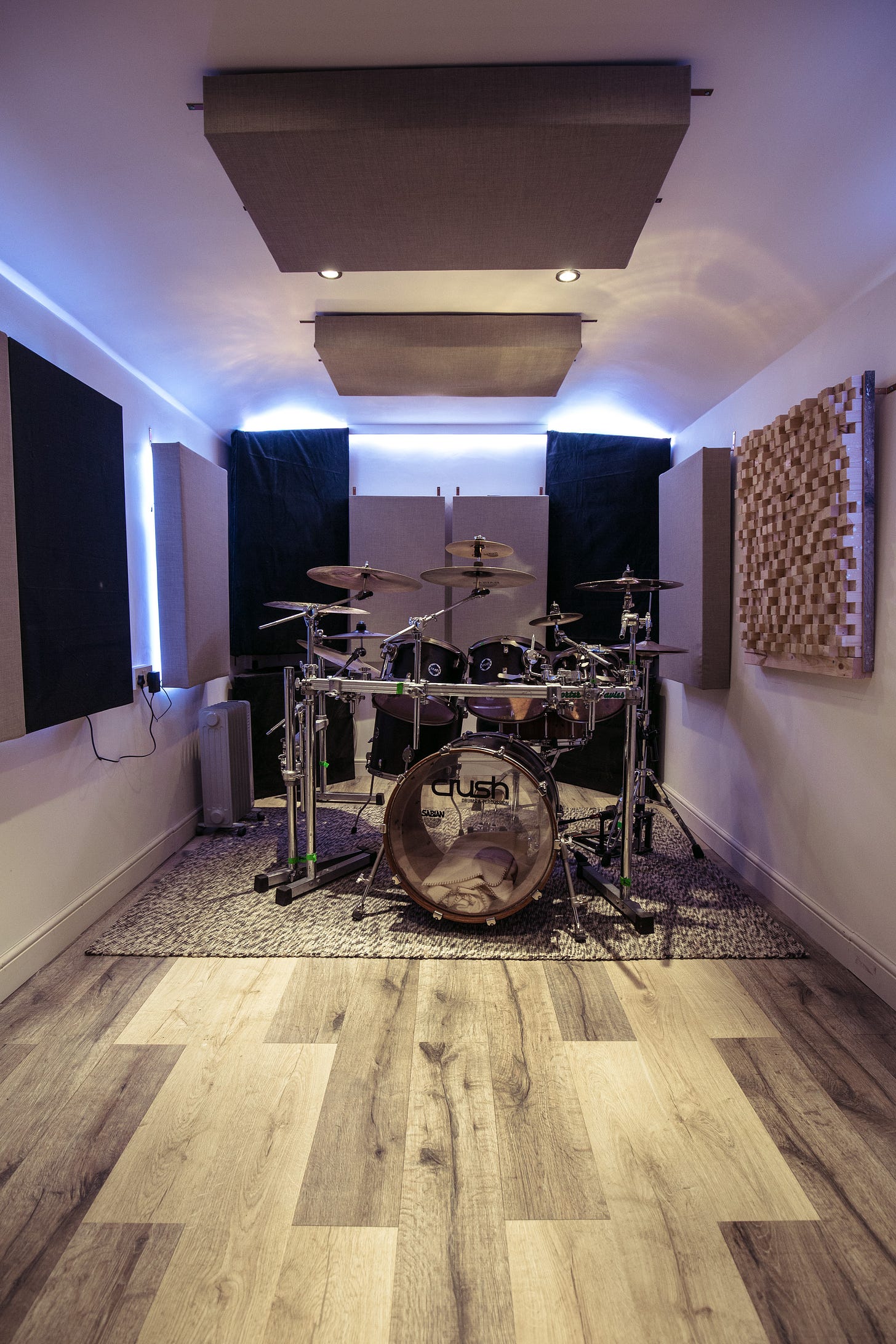10 lessons learned from 5 years running a drum lesson website
For a decade before I moved to the US in 2019, I wanted to make a drum lesson website. Over the years, I’d connected with a good number of drummers on TesseracT tours, as I’d host small daily drum clinics on the road.
I had all their email addresses, so I figured I at least had a place to start - I had people I could reach out to, who might be interested in learning with me. It would be years before I finally reached out to any of them…
Let’s start at the start - In 2015, I bought and renovated my first home in Cannock, Staffordshire - a tired little English town where not much happens, unless you’re a Tuesday morning lager drinker or semi-professional sports gambler.
I finally had my own space and although the location left a lot to be desired, it was super affordable - the mortgage was a little over £300/$380 per month.
I chose this house because it was close to my friends and family, I was newly single and I needed this support group around me - and it helped. The property also had a separate building which I knew would make for an excellent home studio - for any drummer this is the dream.
This wouldn’t be my first rodeo - I’d made a few studios before in Reading, UK. This had become a pretty successful local business and, at the time, was my main source of income.
I knew how to put together a relatively sound-isolated studio and I spent the next 5 months doing this.
A photo paints a thousand words, so:
… and eventually, I had a finished drum studio:
In this room, I rehearsed everything for TesseracT’s album Sonder.
I said to myself that once this studio project was complete, I’d get started on a drum lesson website - finally.
I kept hitting a roadblock though. I had no idea what to teach and I didn't have good ways of coming up with ideas for lessons.
I had the ideal space, but I didn’t know how a drum lesson website should be set up. I also didn’t know what my audience wanted to learn or how I could help them the most. It took a few more years before I’d begin to understand this.
The only lesson I ever recorded in this room took me several days to write and edit, and I never published it. Here’s a clip from it:
So, I hit the brakes on the website, telling myself that I was still working on it - even though I wasn’t making any progress at all. I was just thinking about it sometimes.
Thinking about doing the thing, isn‘t doing the thing.
Fast-forward a few years to 2019 and I’m married and have moved to the US with my wife. We’re in Austin TX, I’ve sold my UK rehearsal studio business and have no real plan for how to make a living.
Nothing kicks you up the arse harder than needing to make money in a new place!
I decided the drum lesson website would be a great idea but I still didn’t know how to set this thing up. I didn’t have the capital to pay someone else to do it for me. With the gift of hindsight, I needed to learn what a drum lesson website should do and how it should work - I had to make it myself.
Test the water
To get the ball rolling, I began to livestream on Twitch. This quickly brought in a little bit of income, and it was fun so I followed this path. It helped me grow the skills necessary to talk to a camera as though I’m talking to people, to crack the occasional joke, and to be more comfortable in my own skin.
It also helped me raise the funds to invest in my setup - cameras, and computers - which are essential ingredients for a drum lesson website.
So in late 2019, I started working on the website. It felt like a blank canvas.
I signed up for WordPress and researched membership and course plugins, eventually landing on LearnDash to handle the course structure and presentation.
Making the website was like painting or writing a song. I didn’t know what the end result was going to be, but I always had an idea in my mind what the next step should be - and I still do. As long as I can see forward to the next step, and as long as that next step excites me, I follow it.
I spent a couple of months working on the site - specifically, I was working on a deep-dive course for TesseracT’s song Nocturne.
With this being the most popular song on DSPs and with me being the drummer for TesseracT, it seemed like a good idea to make a course to guide drummers through it. It ended up being 11 lessons with something like 80-90 individual videos explaining concepts and techniques or demonstrating exercises.
Yeh - I went pretty deep on this one.
After three months of working on this lesson, it was ready to launch. I had a plan. I’d give away the first three lessons for free. This would get people through the song intro, all the way up to the hectic drum fill. This, surely, would be a good intro to my teaching style, and show how much effort I’d put into this. I was confident I’d get people to sign up.
And sure enough, in the first month, a few hundred people signed up for this free step.
Maybe three of them paid for the full course.
Damn.
I was sure this would be a hit.
A crucial step I’d failed to take before beginning to work on the course was to ask my audience what they wanted.
I look back on this as a very valuable lesson - I had to experience first-hand that for projects where there’s a significant time investment, I need to do some market research beforehand.
So now, I’ll post on Instagram, in Discord, and to my mailing list, to my existing students, asking if an idea is something they’d find helpful and valuable.
Occasionally I still follow my gut and publish a lesson I’m excited about without testing the water, but I don’t spend three months on those.
The most valuable lessons I learned
In the beginning, I was struggling to get sales through the website. Being the drummer in TesseracT was not enough to entice potential customers to buy my lessons.
So I spent a fairly big chunk of money on a course on how to sell courses. You’ve probably seen these types of things. You get through the hour-long free webinar, read the shining client testimonials then find out the course costs $5000 or whatever.
At that point, you’re emotionally invested and the salesperson knows this. The hope is that you’re in enough pain to part with that kind of capital for their solution to your problem.
Well, I was in enough pain.
I started the course and I have to say, it quickly taught me a lot. It gave me ideas and insight that I wouldn’t have ever landed on by myself.
I’ve refined those ideas and strategies over the years and I’d like to share a few of my best insights with you now:
Be honest - it’s obvious when someone is bullshitting and it ruins your reputation forever. You’re not here to trick people into parting with their cash (unless you’re a dickhead). You’re here to help people, so help them.
Define your niche - this may sound obvious but in this day and age, you need to find your niche. Most things have already been done and done well. So what can you do differently? What can you bring to the table that doesn’t currently exist? How can you get people’s attention? This niche can literally be your personality by the way - you can teach a beginner course on drumming but in your own style - your personality makes the lessons different.
Know your customers - you need to understand who your customers are so that you know when you’re talking to the right people. For example, I know that for my Progressive Drumming Masterclass, my customers are generally US males, 20-55, who have access to a nice drum kit at home, and who have a career in tech. This demographic makes up a large number of my existing Masterclass students.
It’s as challenging to make $20 as it is to make $2000 - I have as many people per month sign up for my top-tier course as I do my most affordable monthly subscription. So don’t be afraid to ask for what you want financially for your efforts. I found that people tend to ask way more questions to part with $20 than $2000 - because the value at $2000 is assumed. At $20 however, I have people messaging me asking things like ‘can I contact you at any time of the day if I need help?’ ‘will you personally message me with feedback on my playing?’ ‘Can I try it free first?’ - none of these questions are asked when people join my Masterclass, (currently priced at $1600 USD). They know that for that kind of money, the thing they’re buying is going to be very good - and it is!
Reach out to people - 90% of the sales I make come from conversations. Most often, I connect with new students on social media. I post a clip of me drumming and ask people to comment if they’d like me to send them some free drum lesson resources. A conversation usually then happens and it’s clear to me when the connection is genuine - when the back-and-forth is friendly and fun.
Talk to people - this is different from the previous point because you’re actually going to get on the phone with people. The first time doing this is terrifying, then it’s fine. I offer potential students the chance to schedule a Zoom call with me if they’re thinking about joining my Masterclass. These calls are fun and friendly, and I have a list of questions I ask that digs deeper into my student’s needs.
Ask your customers what they want - Don’t make the same mistake I made with the Nocturne course. As you grow your audience, ask them what they want from you. Quick online polls are a quick and easy way to do this.
Don’t be afraid to change direction - if something in your business isn’t working, change it. If it feels like you’re pushing this thing uphill all the time, look for the alternatives. Identify what is causing you to lose sleep and explore what you can do to reduce the workload in that area, or potentially bin it altogether if it’s not 100% necessary for your business. You’re supposed to enjoy doing this.
Don’t sell too much of your time - The temptation to offer a load of 1-on-1 personalized lessons is super high. After all, that’s what most people want and it’s the lowest hanging fruit. However, taking on too many 1-on-1 students is a great way of killing all your energy and enthusiasm for teaching, as it takes up all of your time. This was my experience at least. It’s not just the hour spent with the student - it’s all the prep work for each session. So - I limit my number of 1-on-1 students at any given time to five. That way, I have the bandwidth to work closely with these students and offer them the best value, without burning myself out.
Follow-up with people - I use Trello to keep track of the people I’m talking to along with a little info about each of them, so that I can go into conversations prepared. When having conversations across multiple platforms with multiple people, it’s impossible to stay on top of them without a CRM tool. I have also recently set a rule for myself - I follow up with people three times. If I don’t get a reply, I stop. I’m not interested in wasting my time or appearing to be an inbox nuisance. If people want to reconnect with me, they know where to find me.
I could honestly keep going but I feel like this is a long enough read for most people - and it’s super niche!
If you found this helpful though I’d love to know. Please drop me a comment if you have any questions or thoughts on any of this.








